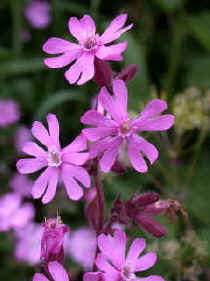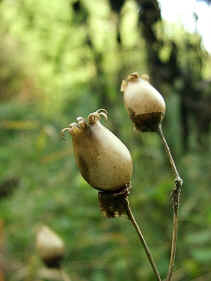Correct!
Mystery Picture Answers
No.13
|
|
 |
The 'pepper-pot' seed-head of a Red Campion plant Silene dioica. During the Autumn, the pot shaped seed chamber opens at the top, allowing dozens of tiny seeds inside to be dispersed by the wind as it shakes the chamber. Red Campions are a common roadside and bankside plant throughout much of Britain, and are also found growing in and around woodland, preferring alkaline soils. A perennial (meaning that it can live for more than two years), the Red Campion is often a tall plant growing up to 1 metre in height, producing oppositely placed elliptical leaves and bright pink flower heads on long hairy stems. Each flower consists of 5 forked petals and is either male or female. They are insect pollinated, meaning that visiting insects transfer pollen from the male to the female flowers. The flowering season lasts from March until November. The ripe seed capsule developing from the fertilised female flower has 10 small 'teeth' at the top. These fold back to create a small hole, allowing the tiny light seeds inside to be dispersed by the wind as it blows the seed head.
Back to Mystery Picture Gallery
|
||

